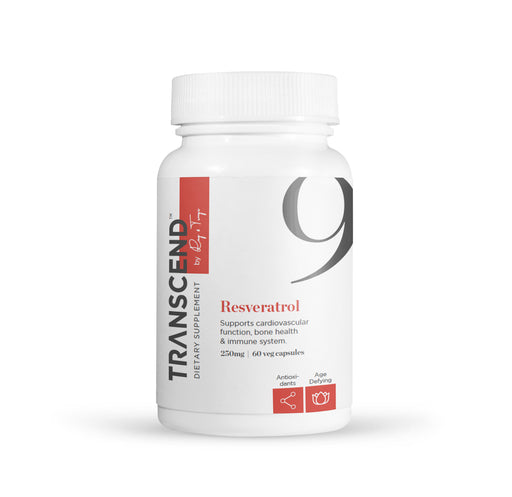
Vitamin B-12, Sublingual
Increased energy Improve mood Fight fatigue Common deficiency Better absorption Vitamin B12 (also called cobalamin) is one of eight water-solu...
View full details
"Our understanding of the principal components of human aging is growing rapidly. Strategies have been identified to halt and reverse each of the aging processes. Perhaps the most energetic and insightful advocate of stopping the aging process is Aubrey de Grey, a scientist with the department of genetics at Cambridge University. De Grey describes his goal as “engineered negligible senescence”—stopping us from becoming more frail and disease-prone as we get older.
According to de Grey, “All the core knowledge needed to develop engineered negligible senescence is already in our possession—it mainly just needs to be pieced together.”
De Grey describes seven key aging processes that currently encourage senescence and has identified strategies for reversing each. Here are four of de Grey’s key strategies:
Chromosomal (nuclear) mutations and “epimutations.” Almost all of our DNA is in our chromosomes, in the nucleus of the cell. (The rest is in the mitochondria.) Over time, mutations occur, that is, the DNA sequence becomes damaged. Additionally, cells accumulate changes to “epigenetic” information that determine which genes are expressed in different cells. These changes also matter because they cause cells to behave inappropriately for the tissue they’re in. Most such changes (of either sort) are either harmless or just cause the cell to die and be replaced by division of a neighboring cell. The changes that matter are primarily ones that result in cancer. This means that if we can cure cancer, nuclear mutations and epimutations should largely be harmless.
De Grey’s proposed strategy for curing cancer is pre-emptive: It involves using gene therapy to remove from all our cells the genes that cancers need to turn on in order to maintain their telomeres when they divide. This will not stop cancers from being initiated by mutations, but it will make them wither away before they get anywhere near big enough to kill us. Strategies for deleting genes in this way are already available and are rapidly being improved.
>Scientists in Oregon have found a way to remove damaged genetic material and replace it with healthy DNA.
>Several cases of leukemia were cured through gene therapy. Larger trials are underway.
Toxic cells. Occasionally, cells get into a state where they’re not cancerous, but still it would be best for the body if they died. Cell senescence is an example, and so is having too many fat cells. In these cases we need to kill those cells (which is usually easier than reverting them to a healthy state). Methods are being developed to target “suicide genes” to such cells, and also to make the immune system kill them.
Blocking the telomerase enzyme is one of many strategies being pursued against cancer. Doing this would prevent cancer cells from replicating more than a certain number of times, effectively destroying the cancer’s ability to spread. There are many other strategies being intensely pursued to overcome cancer. Particularly promising are cancer vaccines designed to stimulate the immune system to attack cancer cells. These vaccines could be used to prevent cancer, as a first-line treatment, or to mop up cancer cells after other treatments. We’ll discuss Bridge Two strategies against cancer in more detail in chapter 16, “The Prevention and Early Detection of Cancer.”
>Telomerase procedures are still controversial. It appears that inhibiting the enzyme can kill cancer cells, but also triggers resistance pathways that allow cancer to survive and spread.
Mitochrondrial mutations. Another aging process identified by de Grey is accumulation of mutations in the 13 genes in the mitochondria, the energy factories for the cell. The mitochondrial genes undergo a higher rate of mutations than those in the nucleus and are critical to the efficient functioning of our cells. Once we master somatic gene therapy, we could put multiple copies of these 13 genes within the relative safety of the cell nucleus, thereby providing redundancy (backup copies) for this vital genetic information.
The mechanism already exists in cells for nucleus-encoded proteins to be imported into the mitochondria, so it is not necessary for these proteins to be produced in the mitochondria itself. In fact, most of the proteins needed for mitochondrial function are already coded by the nuclear DNA. There has already been successful research in transferring mitochondrial genes into the nucleus in cell cultures.
>Scientists are working to create backup copies of healthy mitochondria.
>There are some issues with nuclear copies of mitochondrial DNA (pdf)
Cell loss and atrophy. Our body’s tissues have the means to replace worn-out cells, but this ability is limited in certain organs, says de Grey. For example, the heart is unable to replace cells as quickly as needed as we get older, so it compensates by enlarging surviving cells using fibrous material. Over time, this causes the heart to become less supple and responsive.
A primary strategy here is to deploy therapeutic cloning of our own cells, as described on page 22.
Evidence from the genome project indicates that no more than a few hundred genes are involved in the aging process. By manipulating these genes, radical life extension has already been achieved in simpler animals. For example, by modifying genes in the C. elegans worm that control insulin and modifying sex hormone levels, the life span of the test animals was expanded sixfold, the equivalent of a 500-year life span for a human.
As we gain the ability to understand and reprogram gene expression, reprogramming the aging process in humans will become increasingly feasible. The idea that aging and dying are inevitable is deeply rooted, but this age-old perspective will gradually change as gene therapies are successfully demonstrated over the next two decades.
[Reprinted and adapted from Fantastic Voyage: Live Long Enough to Live Forever by Ray Kurzweil and Terry Grossman, M.D.]
Chapter 2, pp 24-26.

Increased energy Improve mood Fight fatigue Common deficiency Better absorption Vitamin B12 (also called cobalamin) is one of eight water-solu...
View full details
Combat internal aging Protect cells from radiation damage Increase antioxidant capacity Take with lecithin for better absorption Optimal dose for...
View full details
2022 update: Future batches of this product will use a Ubiquinol product that is a greenish capsule rather than a red softgel Bioavailable form o...
View full details
2022 update: to maintain the same dose of Phosphatidylcholine you are accustomed to, we are moving back to the 420mg in 2 softgels! 2022 update: ...
View full details
Leave a comment